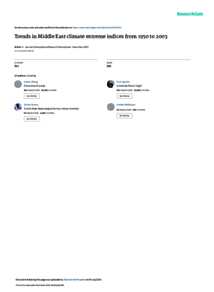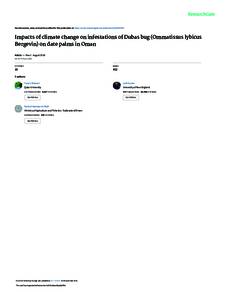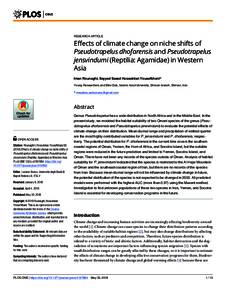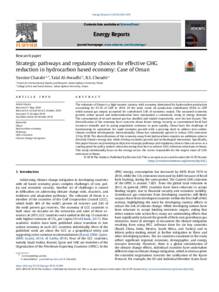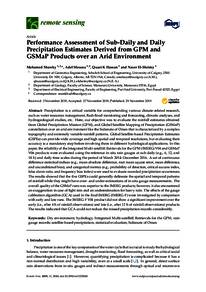Document
Trends in Middle East climate extreme indices from 1950 to 2003.
Identifier
DOI: 10.1029/2005JD006181
Source
Journal of Geophysical Research Atmospheres. v. 110, 22, D22104, p. 1-12
Contributors
Aguilar, Enric., Author
Sensoy, Serhat., Author
Melkonyan, Hamlet. , Author
Tagiyeva, Umayra. , Author
Ahmed, Nader. , Author
Kutaladze, Nato. , Author
Rahimzadeh, Fatemeh. , Author
Taghipour, Afsaneh. , Author
Hantosh, T. H. , Author
Albert, Pinhas. , Author
Semawi, Mohammed. , Author
Ali, Mohammad Karam. , Author
Al-Shabibi, Mansoor Halal Said. , Author
Al-Oulan, Zaid. , Author
Zatari, Taha. , Author
Khelet, Imad Al Dean. , Author
Hamoud, Saleh., Author
Sagir, Ramazan. , Author
Demircan, Mesut. , Author
Eken, Mehmet. , Author
Adiguzel, Mustafa. , Author
Alexander, Lisa., Author
Peterson, Thomas C. , Author
Wallis, Trevor., Author
Country
United Kingdom.
City
Oxford
Publisher
Blackwell Publishing Ltd.
Gregorian
2005-11-27
Language
English
English abstract
A climate change workshop for the Middle East brought together scientists and data for the region to produce the first area-wide analysis of climate extremes for the region. This paper reports trends in extreme precipitation and temperature indices that were computed during the workshop and additional indices data that became available after the workshop. Trends in these indices were examined for 1950-2003 at 52 stations covering 15 countries, including Armenia, Azerbaijan, Bahrain, Cyprus, Georgia, Iran, Iraq, Israel, Jordan, Kuwait, Oman, Qatar, Saudi Arabia, Syria, and Turkey. Results indicate that there have been statistically significant, spatially coherent trends in temperature indices that are related to temperature increases in the region. Significant, increasing trends have been found in the annual maximum of daily maximum and minimum temperature, the annual minimum of daily maximum and minimum temperature, the number of summer nights, and the number of days where daily temperature has exceeded its 90th percentile. Significant negative trends have been found in the number of days when daily temperature is below its 10th percentile and daily temperature range. Trends in precipitation indices, including the number of days with precipitation, the average precipitation intensity, and maximum daily precipitation events, are weak in general and do not show spatial coherence. The workshop attendees have generously made the indices data available for the international research community.
ISSN
0148-0227
Category
Journal articles

